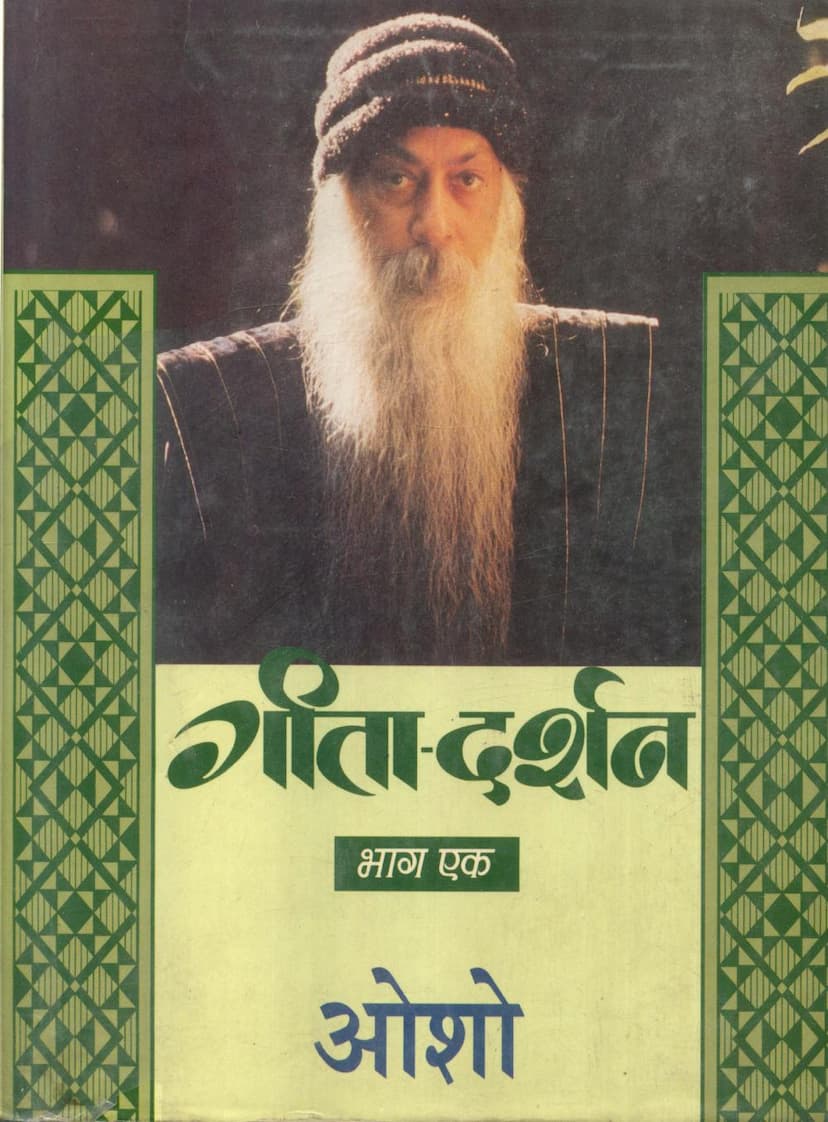Gita Darshan Part 01
Added to library: September 1, 2025

Summary
This is a summary of "Gita Darshan Part 01" by Osho Rajnish, based on the provided text.
Book Title: Gita Darshan Part 01 Author: Osho Rajnish Publisher: Rebel Publishing House Puna
Overall Summary:
"Gita Darshan Part 01" is a compilation of 28 discourses by Osho Rajnish on the first three chapters of the Shrimad Bhagavad Gita: Vishad Yoga, Sankhya Yoga, and Karma Yoga. The book presents Osho's unique perspective on the Gita, viewing it primarily as a profound psychological treatise that points beyond the mind to the spiritual. Osho emphasizes that while the Gita delves into the intricacies of the mind, true spirituality transcends the realm of intellect, scriptures, and words.
Key Themes and Insights:
- The Nature of Spirituality: Osho posits that spirituality is an experience that cannot be contained within scriptures or doctrines. It is the transcendence of all limitations, the silencing of words, and the nullification of expressions, leading to an unutterable realization.
- The Gita as Psychology: Osho identifies the Gita as a profound psychological text, delving deep into the human mind's complexities, its conflicts, and its potential for transformation. He suggests it's a "Manas Shastra" (Science of the Mind) that ultimately points beyond the mind itself.
- Vishad (Melancholy) as a Catalyst: The book highlights that Vishad, or deep melancholy and existential crisis, as experienced by Arjuna, is not a negative state but a fertile ground for spiritual revolution and creation. Osho contrasts unhealthy despair that leads to stagnation with healthy despair that becomes a gateway to higher consciousness and joy, exemplified by figures like Buddha and Mahavir.
- The Krishna-Arjuna Dialogue: The dynamic between Krishna and Arjuna is presented as a timeless dialogue that continues within every individual's consciousness. Krishna acts as the guide who helps transform Arjuna's (representing the ordinary human) despair into a path of self-discovery and liberation, aided by dialogue rather than dogma.
- The Nature of Reality (Manifest and Unmanifest): Osho explores the concept of the unmanifest (avyakta) that lies beyond the manifest (vyakta). He uses Osho's "The Tenth Man" story to illustrate how a direct, self-referential "mathematics" (consciousness) is needed to grasp the unmanifest, unlike external, relative calculations.
- The Mind as the Source of Problems: Osho consistently points to the mind, with its desires, conflicts, and attachments, as the root of human suffering and bondage. True spirituality lies in transcending the mind's limitations.
- The Importance of Direct Experience: Osho criticizes reliance on scriptures and mere intellectual understanding. He champions direct experience ("dekha-dekhi baat") and authentic inner realization over borrowed knowledge.
- The Universality of the Gita: The Gita's enduring relevance is attributed to its universal appeal, transcending specific religious or philosophical divides. Its message resonates with seekers across various paths, including Advaita Vedanta, devotion, knowledge, and rational intellect.
- The Transformation from Vishad to Anand: The core of the Gita's message, as interpreted by Osho, is the process of transforming Vishad (despair) into Anand (bliss) through self-awareness, acceptance of duality, and ultimately, transcendence.
Specific Chapters Covered:
- Chapters 1-3: The discourses cover the initial chapters of the Bhagavad Gita, focusing on Arjuna's crisis of conscience, the philosophical underpinnings of Sankhya Yoga, and the practical path of Karma Yoga.
Osho's Approach:
Osho's commentary is characterized by its psychological depth, modern relevance, and emphasis on personal transformation. He uses anecdotes, philosophical insights, and his characteristic directness to guide the audience towards understanding the Gita not as an ancient text to be debated, but as a living guide for inner exploration and liberation. He draws parallels with Western psychology and philosophy to make the teachings accessible to a contemporary audience.
The Text's Structure:
The book is presented as a collection of discourses, offering a comprehensive exploration of the initial teachings of the Bhagavad Gita through Osho's unique lens. The provided text includes an introduction that sets the stage for Osho's interpretation, followed by detailed summaries of key points from the initial chapters, outlining the core themes and Osho's analytical approach to Arjuna's predicament and Krishna's guidance.
In essence, "Gita Darshan Part 01" is an invitation to see the Bhagavad Gita not just as a spiritual scripture, but as a profound psychological and philosophical map for navigating the inner landscape of human consciousness and discovering one's true, unconditioned nature.